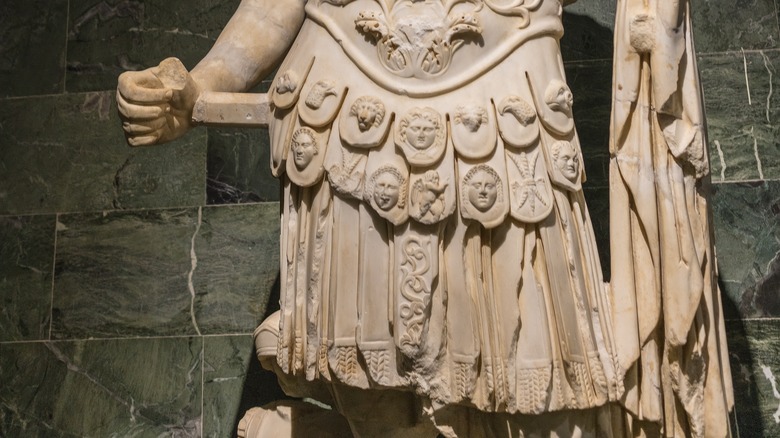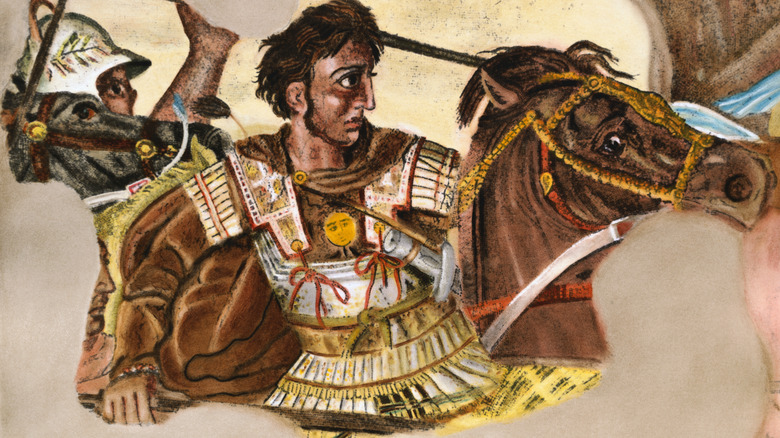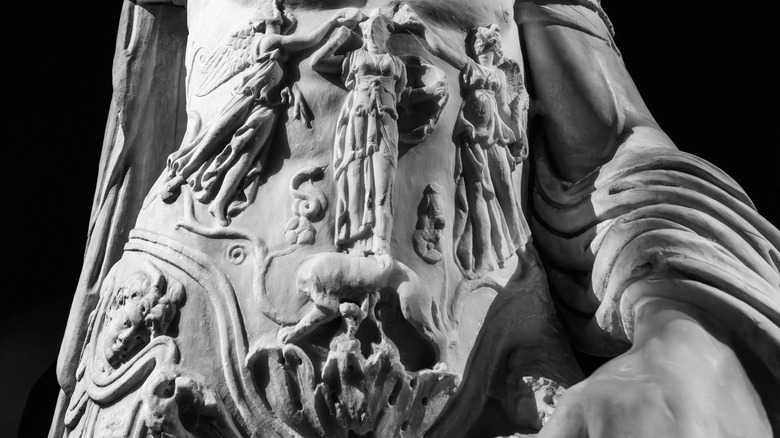What Are Those Skirts Roman Soldiers Wore
If you caught the movie "Gladiator II" or the original from 2000 and wondered if Roman soldiers actually wore those little skirts that Pedro Pascal or Russell Crowe had on in these movies, they did. "Gladiator" played fast and loose with history, but it did get a few things right — like the emperor Commodus being a truly nasty guy. The armor the characters wore was another relatively accurate detail. The skirt was made from strips of either stiffened linen or leather, called "pteruges" (also written "pteryges").
They were typically attached to a subarmalis, a kind of undergarment made of either linen, felt, or leather that Roman soldiers wore under their armor. In some cases, the strips of leather were attached to metal body armor called lorica squamata that resembled scales. Pteruges were meant to protect the thighs, a vulnerable area in combat since it fell between the bottom of the shield and the top of their metal leg armor called greaves. The Romans didn't invent pteruges, though — they stole the idea from the Greeks.
Pteruges were coopted from the Greeks
The Romans adopted Greek culture on a large scale, from philosophy to art to religion, co-opting the Greek gods, like the messenger god Hermes, and changing their names (in this case the Romans called him Mercury). They also co-opted Greek-style armor and tactics. The Greeks invented the pteruges, which, besides hanging down to protect the thighs, were also used at the shoulders. They came into use in Greece during the mid-sixth century B.C., when city states relied on citizen soldiers called hoplites.
This piece of equipment quickly spread in use since the thighs were a vulnerable spot. The earliest pteruges were made of stiffened linen and included two rows, which later shifted to a single row, possibly to cut down on weight. The Romans began adopting hoplite armor not long after the Greek invention of the pteruges and kept it as a key piece of equipment for hundreds of years. There were changes that took place over that time, but the pteruges nevertheless persisted.
Pteruges changed over time
Over the centuries, as the Roman Empire went from the Regal Period that began in 753 B.C. to the empire's fall in 476 A.D., the pteruges, along with other aspects of Roman armor changed. For one thing, knee-length breeches, made of leather or wool, called feminalia, came into popular use after Caesar Augustus (63 B.C. to 14 A.D.) began wearing them when he traveled in colder climates. Some scholars believed these breeches included pteruges-like strips of leather or another material.
As time went on, pteruges took on a more aesthetic quality, with some having decorative borders, coils of thread, and fringes at the ends. In some cases the pteruges became much shorter, more like tabs than strips (legionaries in the early 3rd century A.D). Later additions included metal-scale armored shirts with pteruges attached, a style that continued into the Byzantine period (330 to 1453 A.D.). While pteruges eventually stopped being used all together, they live on in films like "Gladiator," where they hark back to a time when soldiers had to rely on a variety of tools to stay alive.


